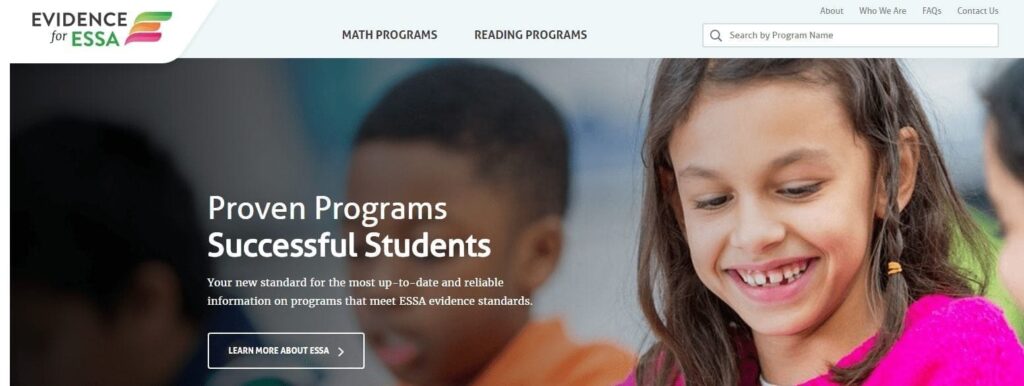Although the Every Student Succeeds Act leaves a lot of decisions about how to improve struggling schools to schools and districts, the law is quite clear that the strategies leaders select must be based in evidence of what works. In “For Equity-Oriented State Leaders: 9 Ideas for Stimulating School Improvement Under ESSA,” we urge state leaders to support schools and districts in creating improvement plans with evidence-based strategies and interventions. But education leaders at all levels may be asking themselves: “What is ‘evidence,’ and where can I find it?”
The new Evidence for ESSA website (created by Johns Hopkins’ Center for Research and Reform in Education) is a promising tool to help answer those questions. For example, say a principal of a low-performing elementary school wants to develop the literacy skills of struggling readers in third through sixth grade. She can go to the Evidence for ESSA website and quickly find nine reading programs for students in grades 3-6 that meet the definition in ESSA for having “strong” or “moderate” evidence. She can choose a program that has been proven to be effective in schools with similar demographics as the one she leads — and this is where the Evidence for ESSA site shines. School leaders can identify programs that have worked in schools with specific characteristics (rural, urban, suburban); student populations (race, family income, disability status, English learner status); and even program needs (whole school vs. struggling readers). This kind of targeting helps school leaders avoid wasting any time or resources on programs that haven’t demonstrated effectiveness for the needs or populations they have.
Of course, while selecting a proven program is critical to improving student outcomes, it shouldn’t be the first step (or the last). Education leaders will need to conduct thoughtful needs assessments that guide their decisions about what kinds of programs or practices to implement. They will need to consider their available funding, staff resources and skills, and support when selecting evidence-based interventions, since the success of an initiative depends heavily on school and district capacity to implement it well. And, in schools that serve some groups of students well but serve other groups poorly, leaders will need to look beyond Evidence for ESSA to address systematic problems such as inequitable assignment to strong teachers, low rates of participation in advanced coursework, or disproportionate discipline.
With that kind of deliberate planning, Evidence for ESSA is a promising resource for district and school leaders who are looking for research-backed strategies to improve low-performing schools.




